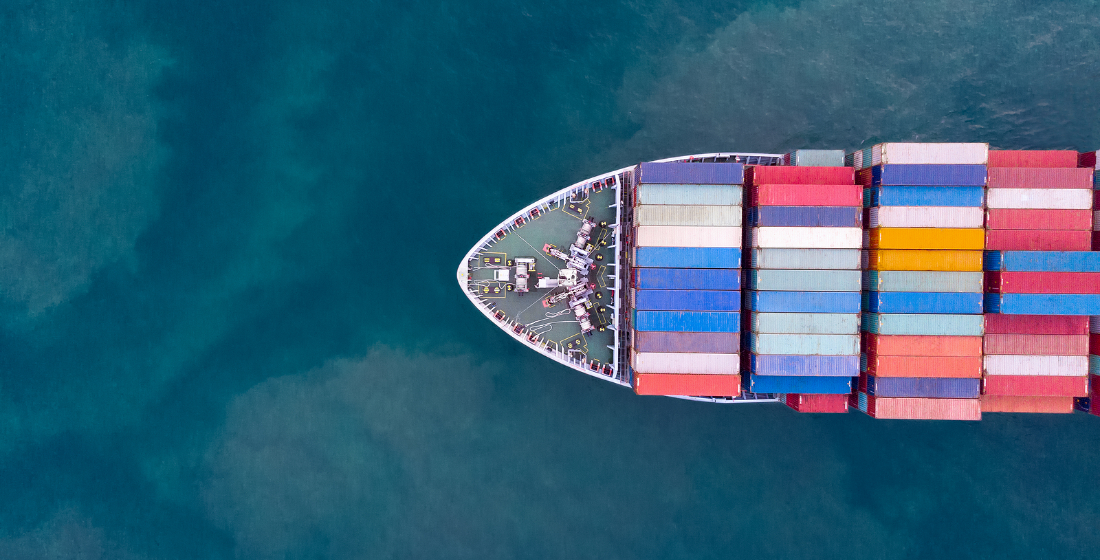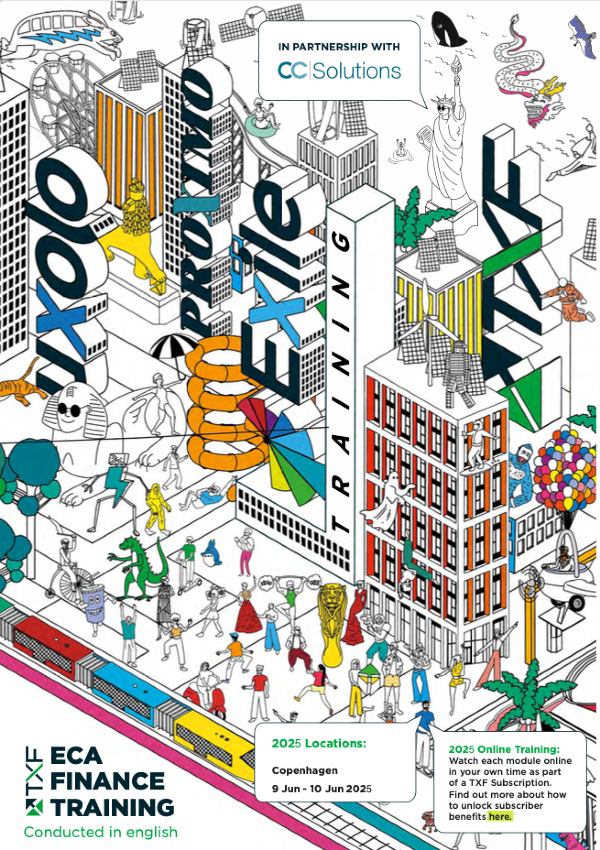Decarbonising shipping: What gets measured gets managed
With 80% of world trade requiring shipping to one degree or another, it is a major contributor to greenhouse gas emissions. So what can be done to facilitate the green transition in shipping? Especially given renewable fuels are not economically viable as a feedstock to power the industry - for now.

When the Ever Given captured the limelight last March by lodging itself in the Suez Canal, much noise was made about the enormity of the vessel and the vulnerabilities large cargo ships have introduced into global trade. Much less attention was paid to the smog which coloured the entrances to the canal, created by the subsequent enormous traffic jam of ships. So polluting were these ships that the EU’s Sentinel-5P satellites picked up a huge spike in emissions pumped out by their idling diesel engines.
The fumes created by these hundreds of ships was a good visual representation of how polluting the shipping industry is. Indeed, if the industry was a country, it would have the 7th highest global emissions output, contributing more carbon than Germany, according to data from UNFCCC.
“These emissions are projected to increase significantly if mitigation measures are not put in place swiftly,” according to the European Commission. Further to this an 2014 IMO study on greenhouse gasses found that if nothing is done to curb carbon emissions then we should expect to see an emissions increase of between 50% and 250% by 2050. Such growth would blow past the International Maritime Organization (IMO) target of reducing annual emissions from shipping by 70% by 2050, compared with 2008 levels, severely undermining the objectives of the Paris Agreement.
Are renewables too expensive for shipping?
Achieving these, and similar, targets will require radical and urgent action, something that can be accomplished through the regulation of carbon, claimed Rasmus Bach Nielsen, global head of fuel decarbonisation at Trafigura, speaking at the TXF Sustainable Commodity Finance virtual event last month.
“In order for decarbonisation to happen sooner rather than later, which is what all our stakeholders are requiring, we need a regulated price on carbon,'' said Nielsen. “If we don't have regulation and a price on carbon then the transition will not happen as fast as we need it to.”
Nielsen highlighted the particular challenge that shipping faces with attempts to decarbonise, noting the infrastructure for these green fuels isn't there yet. He says: “The money is there, the pension funds have substantial funds ready to go and invest across the world. The challenge that we see, in the scenario without a price on carbon cost neutralising low-and zero carbon fuels, is who can afford to use renewable fuels such as green ammonia?”.
Nielsen points out that green ammonia has an energy density that is 2.2 times less than the regular fuels of today, effectively ruling it out as economically viable. “The economics do not work without a price on carbon. It's very difficult for ship owners and operators to invest in retrofitting. It's very hard for pension funds to invest in renewables because there is no demand.
“We have a chicken and egg situation, and by far the best place to start is to create a regulatory framework where low-and zero carbon fuels are cost neutralised and when that happens there will be a rapid adoption of decarbonised transportation fuels.”
The need for real time emissions data
Stricter carbon pricing to drive up the cost of heavy fuel oils and slash the price of renewables is only part of the solution. A highly detailed picture of the emissions footprint of individual vessels is also vital, according to Simon Ring, Head of Maritime Trade Technologies & ESG at Pole Star.
Ring’s view is that, if used correctly, such data will make it commercially viable for an owner, operator and charterer of a vessel to meet sustainability targets, subsidised by access to lower financing rates, flag administration taxes, registration and port fees and insurance, without which it simply wouldn't be viable for the shipping industry to invest in greener fuels and infrastructure.
“If you're going to incentivise the owners, the operators and the charters to do something you have to make it commercially viable," he says. “It's got to be across a multitude of industry sectors to make it work, not just banks. And you've got to give them the ability to access and utilise that data on a real time basis.”
Traditionally, benchmarks like those laid out by the Poseidon Principles, Sea Cargo Charter and IMO have been used to assess a ship's green credentials, however Ring sees a need for a more detailed look into the individual vessel.
“It's like having two cars that are identical, you can get 56 miles per gallon out of one and you can get 5 out of the other if you wanted to,” said Ring. “In shipping, it's much more complex, because emissions are dependent on the vessel itself, its age, speed, route patterns, fuels, knowledge on board the vessels and all sorts of other factors.
“The benchmarks shine a good light, but really you have to get granular, real time to have a cause and effect. There are thousands of tankers in the world, if every tanker of a certain build, design, year of build etc. is going to get assessed annually on the same basis, the incentivisation will be diminished.
“So while benchmarks, trajectories, and peer groups are helpful, the industry needs more than this. But by using real time granular data on a transaction by transaction basis, we'll tell you what the real carbon emissions ratings are for the ship. That's the future.”
Carbon Chain has partnered with Pole star to integrate their emissions screening technology with Pole Star’s vessel tracking & sanctions compliance solution, PurpleTRAC. In practice, when a vessel will be screened for sanctions compliance using the PurpleTRAC software the ship will also be given a carbon score within seconds. This software has the ability to carbon rate close to 80,000 vessels collecting data on fuel logs, route patterns and speed on the water, which enable clients to make informed decisions on the vessels that they are engaging with.
“To steal a quote from the famous professor Peter Drucker: what gets measured gets managed”, said Adam Hearne, CEO of Carbon Chain. “We want to provide the most granular way to measure activity, because when people see what their operations are doing, then they can have the moment there to make a decision.”
Shipping has traditionally been plagued with issues such as reliance on old processes as well as immense regulatory scrutiny. ESG requirements, regulations and targets furthers the strain placed on the shipping industry as yet another consideration that requires attention. As such, a single point solution that can do everything in one go is incredibly attractive.
Bank pricing key
Ring is keen to point out that cheaper financing provided by the banks will be a key driver in shipping's transition to renewables. He says: “We are currently working across industry to determine and develop the information that financing institutions will require to support the shipping industry with more competitive rates for owners, operators and charterers that make best efforts to reduce their carbon footprints.
“The industry is taking it upon itself to run with this, and it's going to run a lot quicker on the basis that the money dries up if you don’t get involved in de-carbonisation efforts.”
Indeed, banks have already begun to move in this direction. In 2018 Gunvor closed a $745m credit line with an interest rate linked to greenhouse gas emissions. Essentially, if Gunvor meets its sustainability targets, whatever those might be, it will receive a discount on interest rates, and a penalty if it misses its target.
While not specifically targeted at reducing emissions from shipping, it's an indicator that banks are able and willing to link their finance to sustainability benchmarks.
Banks won't be alone in this space however, Ring points to interest from alternative investors looking to fill the gap estimated at around $1.5 trillion for SMEs unable to secure trade finance. “In global trade, I think that you're going to see diversification, and if you can format the sustainability and the regulatory pieces in a way that's acceptable, you're going to start to see alternative funding playing it’s much-required part in this area of industry. The way that the global trade is financed is no longer the remit of banks," he says. “But for alternative financiers to engage fully, there has to be sufficient automated data and risk mitigation processes for them to do so.”
The task of decarbonising shipping is gargantuan and financial incentives in tandem with adequate regulation may well aid shipping in hitting the IMO’s target but we should not discount the enormity of the challenge.
“Shipping is the hardest to abate sector for so many reasons, not just technology, but also due to the fact that ships operate across international territories, roaming the seas where the regulation is a lot harder to enforce,” concludes Hearne. “If knowing that shipping is so hard to decarbonise, if you can decarbonise shipping, you're taking a huge step for the world in climate change. So, if the world is getting serious about carbon reductions, shipping will be the bellwether to the transition.”
Before the shipping industry can embark on its voyage to decarbonise it must first overcome the pandemic which has taken a hatchet to shipping deal volumes. TXF data shows that in 2020 a total of 38 deals were recorded with a combined volume of $4.7 billion – a 67% reduction in deal volume on the previous years $14.4 billion. The picture is actually slightly worse as $1.5 billion worth of this were identified as Covid-19 relief schemes.
The pandemic has not totally halted the drive for lower emissions however, in February this year, German manufacturer Hapag-Lloyd sealed green financing for six dual fuel 23,500 tonne ultra large container vessels. These ships will have approximately 15 to 25% lower CO2 emissions than conventionally fuelled vessels, according to Hapag-Lloyd.
It's clear to everyone that the shipping industry needs to decarbonise, and deals like this are certain to balloon in the medium- to long-term, but the industry must recover from the pandemic induced damage before any concerted effort can be made to shift resources into greener shipping.





